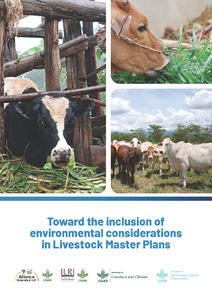Toward the inclusion of environmental considerations in Livestock Master Plans
Abstract
To meet future global demand for food, the productivity of food systems will need to increase, land and other natural resources will need to be used more sustainably, and negative impacts on the environment will need to be minimized while opportunities are sought to restore lands that have already lost nutrients and/or biodiversity (Herrero et al., 2021). The livestock sector plays a key role in fulfilling human food needs because it provides high amounts of protein and micronutrients per unit of product (Herrero et al., 2021). In developing countries, livestock systems substantially contribute to increasing livelihood resilience for many smallholders and offer ways to lift people out of poverty by providing regular income and employment (World Bank, 2009). In addition, these systems provide other benefits to society, such as traction, soil nutrients from manure, and risk management (Havlík et al., 2014; Mehrabi et al., 2020; Thornton and Herrero, 2010). In recent decades, livestock have been one of the fastest-growing agricultural subsectors, driven by the growing demand for livestock products because of population growth, higher income, and urbanization in developing countries (Herrero et al., 2021; Thornton, 2010). Because of this, along with natural resource use, environmental impacts from livestock have increased, making this sector an important contributor to climate change; nutrient mining; water, energy, and land use; biodiversity loss; and pollution of water streams and soils, among other negative environmental impacts. Therefore, reductions in environmental burdens and sustainable natural resource use by the livestock sector will be necessary as production increases to meet future food demand.

